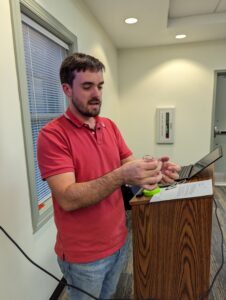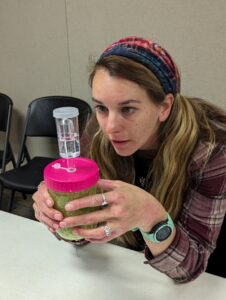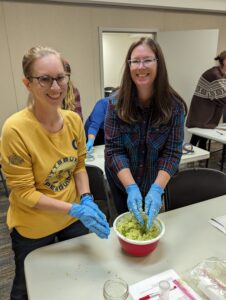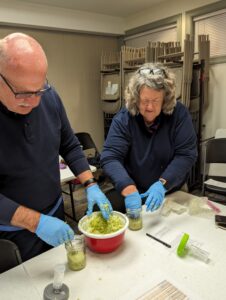Ferment That
go.ncsu.edu/readext?969236
en Español / em Português
El inglés es el idioma de control de esta página. En la medida en que haya algún conflicto entre la traducción al inglés y la traducción, el inglés prevalece.
Al hacer clic en el enlace de traducción se activa un servicio de traducción gratuito para convertir la página al español. Al igual que con cualquier traducción por Internet, la conversión no es sensible al contexto y puede que no traduzca el texto en su significado original. NC State Extension no garantiza la exactitud del texto traducido. Por favor, tenga en cuenta que algunas aplicaciones y/o servicios pueden no funcionar como se espera cuando se traducen.
Português
Inglês é o idioma de controle desta página. Na medida que haja algum conflito entre o texto original em Inglês e a tradução, o Inglês prevalece.
Ao clicar no link de tradução, um serviço gratuito de tradução será ativado para converter a página para o Português. Como em qualquer tradução pela internet, a conversão não é sensivel ao contexto e pode não ocorrer a tradução para o significado orginal. O serviço de Extensão da Carolina do Norte (NC State Extension) não garante a exatidão do texto traduzido. Por favor, observe que algumas funções ou serviços podem não funcionar como esperado após a tradução.
English
English is the controlling language of this page. To the extent there is any conflict between the English text and the translation, English controls.
Clicking on the translation link activates a free translation service to convert the page to Spanish. As with any Internet translation, the conversion is not context-sensitive and may not translate the text to its original meaning. NC State Extension does not guarantee the accuracy of the translated text. Please note that some applications and/or services may not function as expected when translated.
Collapse ▲Our Family and Consumer Science Extension Agent, Avery Ashley, is really into
fermentation. He recently shared his knowledge and skills at a Sauerkraut/Fermentation class at Rourk Library in Shallotte. I was fortunate to attend this class.
Ashley began the class by sharing some history and background into fermentation. Since fermentation was a necessity for preserving food prior to refrigeration, canning and freezing, every culture in the world has traditional foods that are fermented. Commonly known fermented products include yogurt, sour cream, cheeses, kombucha, kimchee, wine, beer, sauerkraut and natto (fermented soy beans). Even coffee and cocoa beans are fermented before used in making coffee and chocolate.
Scientifically, when fermented, foods are preserved when bacteria or yeasts (either
natural or added) converts the natural sugars in the food to into acids. The higher
acidity of these foods preserves them by preventing the growth of harmful bacteria.
In addition to preserving the food, fermentation changes their flavors, aroma,
appearance and nutritional value. Fermentation can break down some nutrients making them easier to digest and more readily available for human absorption. Good examples of this are when lactose is broken down in yogurt and aged cheeses this may allow those that are lactose intolerant to enjoy these foods.
Ashley also reported that, while this is a ancient, world-wide practice there has been no recorded cases of foodborne illness or food poisoning resulting from raw vegetables that have been fermented properly. The biggest safety concern with fermented foods is contamination after the food has been fermented.
Saying that, Ashley offered some cautions and advice for folks wanting to “try this at home”. These include:
- Make sure you’re using a trusted source for instruction or recipes (especially
Extension or USDA publications) - Clean your utensils, hands and equipment before using them. In some cases,
sterilization of equipment is recommended. - Use good clean food products.
- Monitor your ferment frequently to make sure it is going as expected. Small
amounts of yeasts and molds should be removed if they appear. - Don’t try to ferment fish, meat or eggs.
- Don’t try to ferment things in oil or honey. This is a botulism risk.
- Don’t use a heat treatment to process fermented foods unless you are following recipes and procedures that have been tested for this purpose.
- Discard products that feel slimy or have a bad odor.
Class members were able to begin their own jar of sauerkraut using fresh grated
cabbage. They began by adding salt to the cabbage (about 2% salt by weight). They
then carefully massaged this mixture in until it was juicy. The mixture was then placed in jars making sure that the cabbage was covered by the liquid. The jars were closed and an airlock was attached to the lid. The airlock was added to allow for gases to escape from the jars. Once home, the jars are to be placed in a cool, dark place for one to four weeks. Ashley recommended checking it frequently during this time for flavor and also mold or yeasts (these should be removed). The longer that it’s left at room temperature the sourer it will get. When the desired sourness is reached, the sauerkraut should be stored in the refrigerator to slow further fermentation. It can be stored in the refrigerator for up to three months.
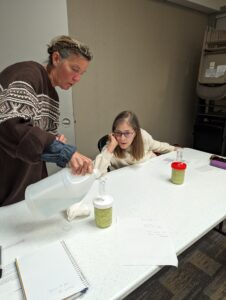
Heidi Stanton from Supply and Carol Tallon, Shallotte checking the measurement of liquid in the airlock.

Heidi Stanton from Supply and Carol Tallon, Shallotte team-up to make the cabbage and salt mixture for the sauerkraut.
Recipes for sauerkraut, kimchi, yogurt, dill pickles and kombucha that have been tested by Cooperative Extension across the nation can be found at:
Read more on Fermentation and Pickling
Ashley is planning additional food preservation classes in 2024. These will include
fermentation, pressure processing and dehydration. Contact our office in Bolivia to get on the mailing list to be advised of these offerings.
Syracuse is a Family and Consumer Science team member and can be reached at N.C. Cooperative Extension, Brunswick County Center 910-253-2610 or by email at
Cheryle_Syracuse@ncsu.edu





